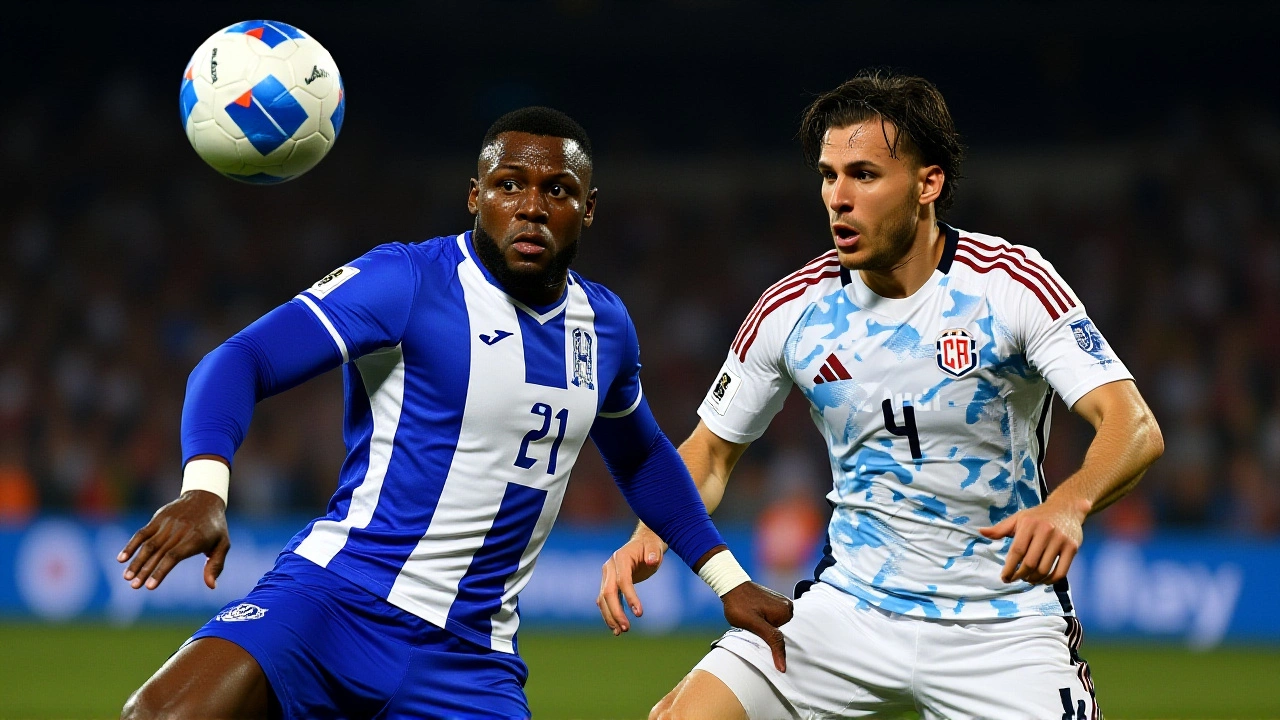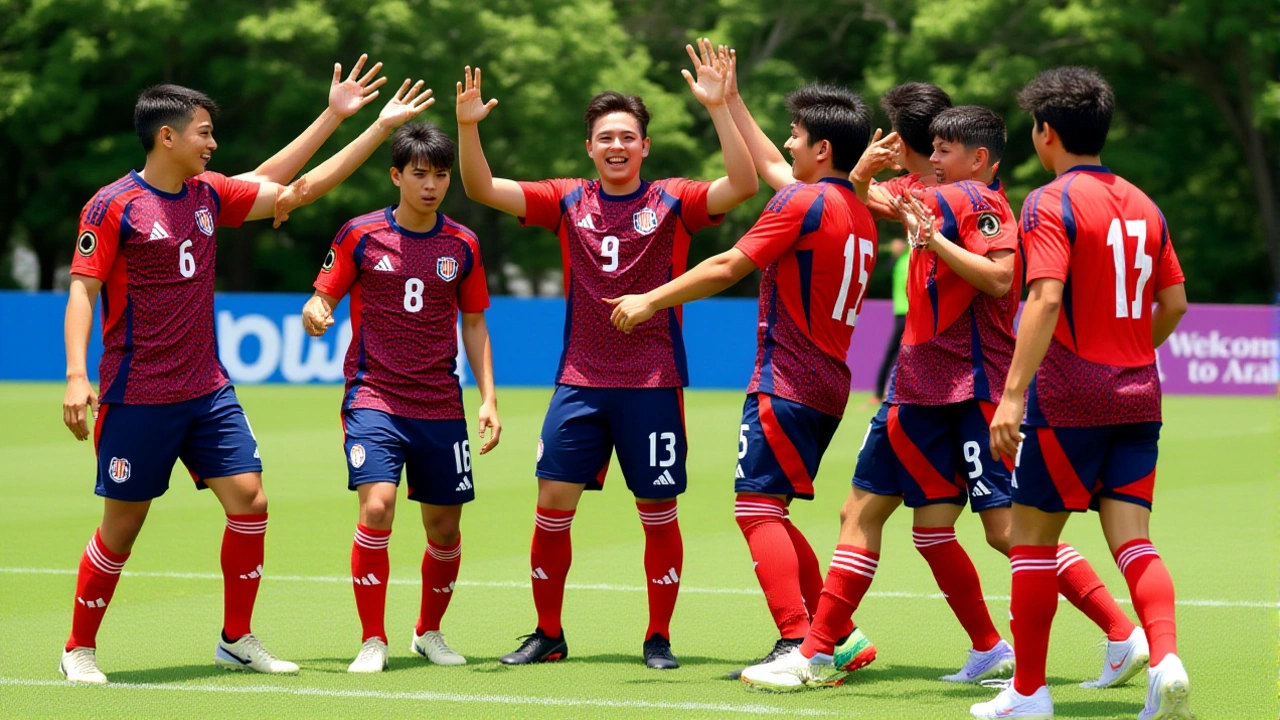Costa Rica Eliminated from 2026 World Cup After 0-0 Draw with Honduras, Ending Three-Tournament Streak

- Nov, 21 2025
- 0 Comments
- Kieran Blackwood
On Tuesday night, November 19, 2025, Costa Rica’s World Cup dreams died in silence. A 0-0 draw with Honduras at Estadio Nacional in San Jose wasn’t just a stalemate—it was a funeral. The result confirmed Costa Rica’s elimination from 2026 FIFA World Cup QualifiersSan Jose, ending a streak of three consecutive World Cup appearances (2014, 2018, 2022). For a nation that once danced into the quarterfinals in Brazil, this was a collapse no one saw coming.
A Streak Broken, a Nation in Shock
Costa Rica finished third in CONCACAF Group C with just seven points from six matches. One win. Four losses. One draw. That’s it. Meanwhile, Haiti—a team that hadn’t qualified for a World Cup since 1974—climbed to first with 10 points after beating Nicaragua 2-0 on the same night. The irony was thick enough to choke on. While Haiti celebrated a 52-year return to the global stage, Costa Rica’s players trudged off the pitch to a chorus of boos from 35,100 fans packed into Estadio Nacional. The crowd, once a symbol of national pride, turned into a mob of disillusionment. Social media exploded. "The worst elimination in our history," one fan told the Tico Times. "They made the impossible possible: failing in a group with no hosts."
The Coach Who Took the Fall
Miguel Herrera Rodriguez, head coach of the Costa Rica national team, didn’t hide. In his post-match press conference, he looked exhausted—not just from the game, but from the weight of expectation. "This is a painful failure," he said, voice steady but eyes hollow. "I am responsible. We didn’t adapt. We didn’t fight hard enough when it mattered most." His tenure, which began in January 2024, was supposed to stabilize a team slipping into mediocrity. Instead, it became a case study in mismanagement. Herrera made only two changes from the 3-1 loss to Nicaragua on November 14—a move CBS Sports called "a recipe for repetition." His tactical rigidity showed: Costa Rica dominated possession against weaker sides like Nicaragua and Haiti but couldn’t convert chances. Against Honduras, they had 58% of the ball but zero shots on target after the 60th minute.
One moment stuck with fans: Joel Campbell, the 32-year-old forward born in San Jose, sent a curling shot toward goal at the 552nd second of the broadcast. It hit the post, bounced off the wall, and led to a corner. The crowd held its breath. The corner was cleared. The moment passed. That was the closest they came to scoring.
The Keeper Who Couldn’t Save Them All
Kaylor Navas, 38, the veteran goalkeeper who plays for Paris Saint-Germain, did everything right. At the 274th second of the broadcast, he dove full-length to deny a point-blank header from Honduras’ striker. The save was textbook. The problem? He was the only one making saves. The defense, once Costa Rica’s pride, looked disjointed. Midfielders dropped too deep. Forwards didn’t press. The team looked like it was playing for the draw—and that’s exactly what it got.
Navas, who has been the backbone of the national team since 2014, didn’t say much after the match. But his silence spoke louder than any interview. He’s been through the highs—the 2014 quarterfinal run, the 2022 group stage survival. Now, he’s left out in the cold again. This wasn’t just a loss. It was the end of an era.

The Federation’s Silence
Meanwhile, the Federación Costarricense de Fútbol, headquartered at Edificio Fedefutbol in La Sabana, San Jose, has stayed eerily quiet. President Hernán Manuel Madrigal Umaña, 58, hasn’t issued a statement. No promises of reform. No timeline for review. That silence is the real scandal.
For years, Costa Rica’s success was built on a strong youth system and tactical discipline. But since 2020, funding for regional academies has dropped. Coaching licenses have stagnated. Recruitment for youth tournaments has become reactive, not strategic. The Tico Times reported that only 11 players in the current squad were developed through domestic academies. The rest? Imported from Europe, often past their prime.
"We’re not a team anymore," one anonymous youth coach told the paper. "We’re a collection of expats and veterans with no pipeline beneath them."
What’s Next?
Coach Herrera is scheduled to meet with federation officials on Thursday, November 21, 2025. Expectations are low. Most fans don’t want him back. But they don’t know who else to turn to. The pool of qualified local coaches is thin. The federation’s reputation is in tatters. And the clock is ticking—World Cup qualifiers for 2030 start in 2028.
There’s a haunting parallel here: Costa Rica’s 2010 failure was followed by a youth revolution that led to the 2014 miracle. But this time, the system that once worked is broken. Rebuilding won’t be a matter of finding a new coach. It’ll be about rebuilding a culture.

Why This Matters Beyond the Pitch
For a country of just 5 million people, football isn’t just a sport—it’s identity. When Costa Rica qualified in 2014, the entire nation shut down. Schools closed. Bars filled with flags. Families watched together. Now, the silence is deafening.
This isn’t just about soccer. It’s about trust. Trust in institutions. Trust in leadership. And if the federation doesn’t act decisively, it won’t just be another missed World Cup. It’ll be the beginning of a long, slow unraveling.
Frequently Asked Questions
How did Costa Rica finish with only seven points in the group?
Costa Rica earned one win (against an unnamed opponent), lost four matches—including a 3-1 defeat to Nicaragua on November 14, 2025—and drew once against Honduras. Their goal difference was -5, the worst in the group. Haiti’s 2-0 win over Nicaragua on the same night sealed their fate, pushing Haiti to 10 points and leaving Costa Rica three points behind with no path to the playoffs.
Who is responsible for this failure—Herrera or the federation?
Both share blame. Herrera’s tactical decisions—especially his reluctance to rotate the squad and his failure to adapt against weaker teams—were glaring. But the Federación Costarricense de Fútbol bears deeper responsibility: underfunded youth academies, outdated coaching certifications, and a reliance on aging European-based players over local talent created a system that couldn’t sustain success.
Has Costa Rica ever missed a World Cup before 2026?
Yes. Costa Rica failed to qualify for the 2010 World Cup in South Africa, ending a 12-year streak. But the 2026 failure is more shocking because it came after three straight appearances—including a historic 2014 quarterfinal run. This time, the collapse was faster, more avoidable, and far more damaging to national morale.
What does Haiti’s qualification mean for CONCACAF?
Haiti’s return after 52 years signals a shift in CONCACAF’s power structure. Once dominated by the U.S., Mexico, and Costa Rica, the region now sees emerging talent from smaller nations. Haiti’s rise—fueled by diaspora players and improved youth programs—shows that investment, not population size, drives success. Costa Rica’s failure highlights what happens when a traditional power stops investing in its foundation.
Will Miguel Herrera Rodriguez be fired?
He’s scheduled to meet federation officials on November 21, 2025, but sources close to the federation suggest he won’t be retained. Public pressure is overwhelming, and the federation needs a clean break to rebuild credibility. Even if he’s not officially fired, his tenure is effectively over. The real question is whether the federation will hire someone who understands local development—or just another foreign coach with a flashy resume.
What’s the biggest lesson from this failure?
Success isn’t sustainable without investment in the next generation. Costa Rica’s golden generation—Alvaro Saborio, Bryan Ruiz, Keylor Navas—were products of a strong domestic system. That system has withered. Without rebuilding youth academies, coaching standards, and scouting networks, no amount of star power from Europe will bring back the glory. The next World Cup cycle starts in 2028. If they don’t act now, the silence won’t just be in the stands—it’ll be everywhere.